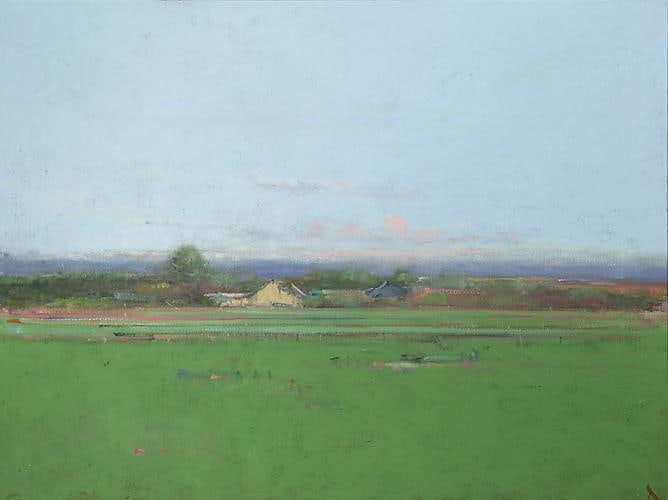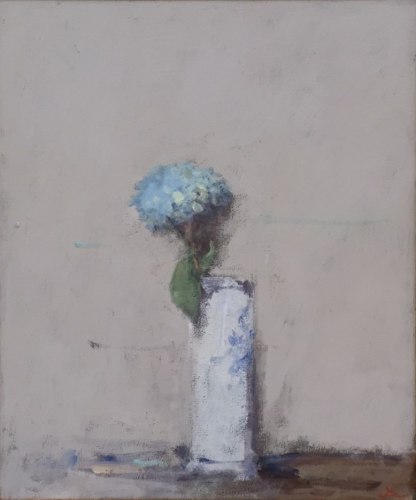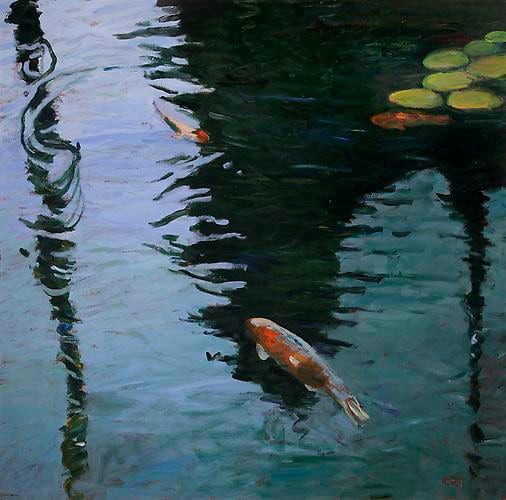American (1934- )
DeLapp entered the art world after World War II when America was heady with Abstract Expressionism and other forms of non-objective painting. Irrespective, he chose to follow his own tastes and work in a representational manner. With traditional art training de-emphasized in the art schools of that time, his knowledge ultimately came from intensive self study as well as close observation of the nineteenth- and early twentieth-century American paintings that he handled while an art dealer in Los Angeles in the 1960s and 1970s. When, in the mid 1980s, representational painting returned as a respected genre, DeLapp found himself in the forefront. Since his move to Cambria, a mid-California coastal community known for its artists, he has focused on two subjects – landscape and still life – painted in a style, which he terms neo-Tonalism after the American art movement Tonalism, which flourished at the end of the nineteenth century. Its artists rendered nature with soft harmonious tones and blurred shapes with the idea of capturing the mood of their subject rather than its photographic details. DeLapp found a perfect subject in California’s great central San Joaquin Valley that lies just east of his adopted town. The area’s mile upon mile of farmland appealed to him personally, and his interest in ecology urged him to capture the rural haven in paint before “progress” covered the farmsteads with housing. Artistically, the works now have realized the valley’s flat horizon, rectilinear fields and orchards, its subtle coloration, as well as its vast sky, what DeLapp describes as “the exquisite patterns and colors formed by nature and man,” and provided the exact elements he needs to satisfy his aesthetic and artistic goal of trying to create a mood and yet retain a strong sense of place.



